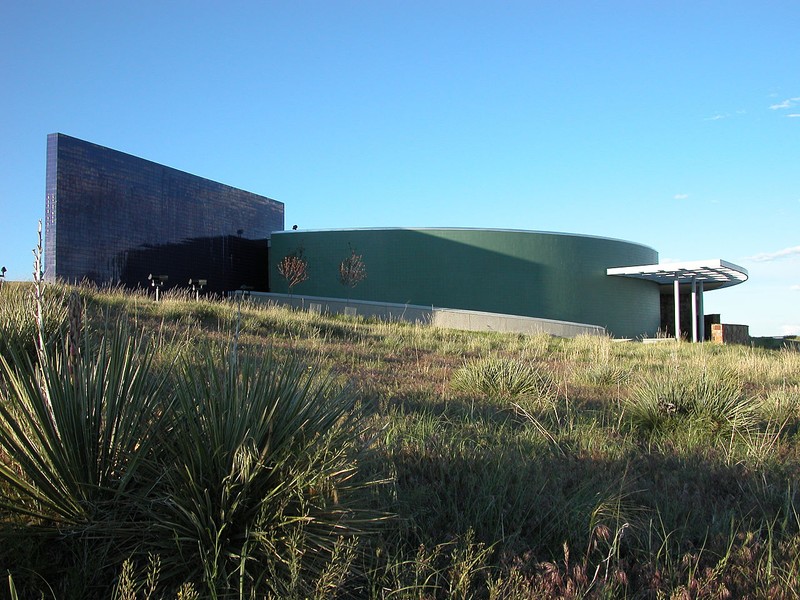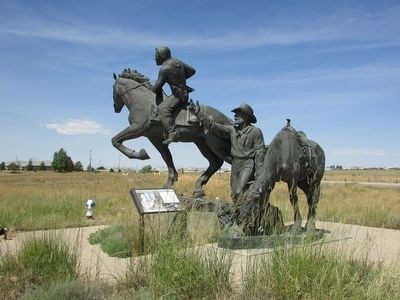National Historic Trails Interpretive Center
Introduction
Text-to-speech Audio
Images
The National Historic Trails Interpretive Center opened in 2002.

The Pony Express statue was created by artist and Utah native Avard Tennyson Fairbanks.

Backstory and Context
Text-to-speech Audio
All of the major historic trails passed through or near Casper, which is way the Center is located here. The trails followed the North Platte and Sweetwater Rivers and then to the South Pass, which is a mostly flat area in southwest Wyoming that traverses the Continental Divide. First recorded by fur trader Robert Stuart in 1812, the pass is the only point where settlers could safely cross the Rocky Mountains (the Lewis and Clark Expedition made the crossing farther north in the Bitterroot Mountains and barely survived). From the South Pass, settlers parted ways and headed to Oregon, Utah, or California.
The South Pass was critical for the growth of the United States; without it, Britain may have permanently claimed some areas in the Northwest, and the Southwest may have remained in possession of Mexico. It is estimated that around a half a million people traveled west through the South Pass corridor during the 19th century. In 1968, President Lyndon B. Johnson signed The National Trails System Act into law, which protects the western overland trails and many others.
Sources
"About the Center." National Historic Trails Interpretive Center. Accessed August 22, 2019. https://nhtcf.org/about.
Bagley, Will. "South Pass." WyoHistory.org. November 8, 2014. https://www.wyohistory.org/encyclopedia/south-pass.
Del Bene, Terry A. "Trails across Wyoming: The Oregon, Mormon Pioneer and California Routes." WyoHistory.org. November 8, 2014. https://www.wyohistory.org/encyclopedia/trails-across-wyoming-oregon-mormon-pioneer-and-california-routes.
Wikimedia Commons: https://en.wikipedia.org/wiki/National_Historic_Trails_Interpretive_Center#/media/File:National_Historic_Trails_Interpretive_Center.jpg
The Historical Marker Database
